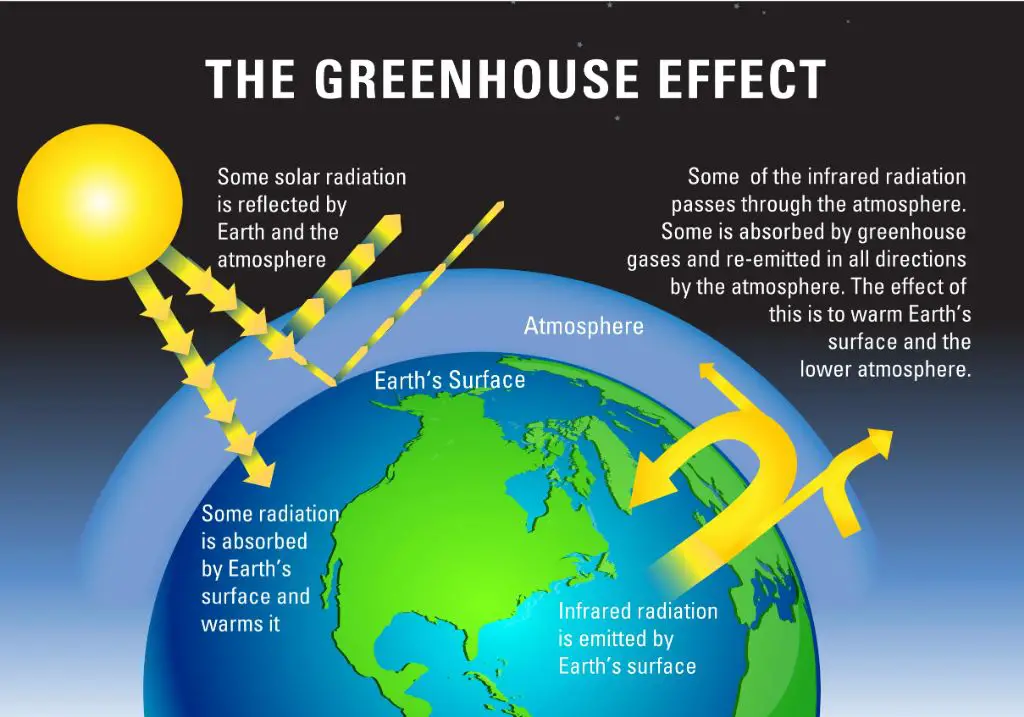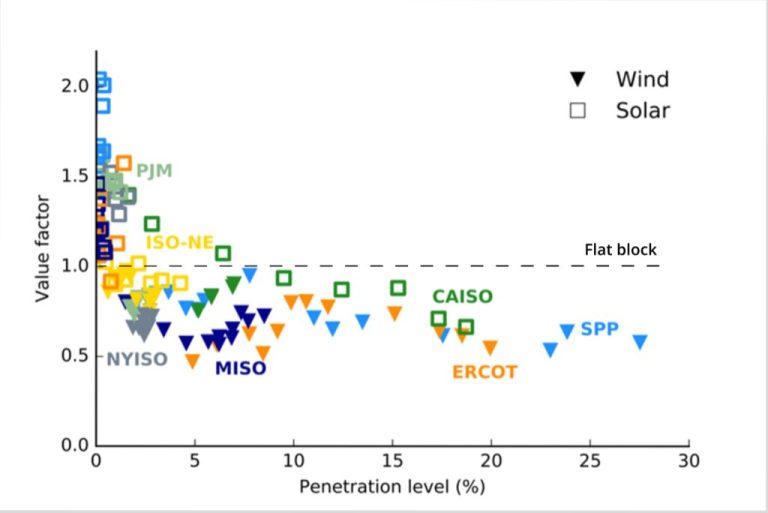How Does Solar Radiation Keep The Earth Warm?
Earth’s climate is regulated by the balance between incoming solar radiation from the Sun and outgoing thermal infrared radiation from Earth’s surface and atmosphere. This is known as Earth’s energy budget. Solar radiation is electromagnetic radiation emitted by the Sun, consisting of visible light, ultraviolet radiation, and infrared radiation that heats up Earth’s surface and atmosphere. Earth maintains an energy balance by emitting thermal radiation back into space, primarily in the infrared part of the spectrum. Greenhouse gases in the atmosphere, like water vapor, carbon dioxide, and methane, absorb some of the outgoing thermal radiation. This retains heat and warms the lower atmosphere and surface, creating a natural greenhouse effect for Earth. An enhanced greenhouse effect from increased levels of greenhouse gases can disrupt Earth’s energy balance and alter global temperature.
The Sun’s Energy Output
The sun is a hot ball of gases primarily composed of hydrogen and helium. Within its core, nuclear fusion reactions produce tremendous amounts of energy. This energy is emitted from the sun’s surface in the form of electromagnetic radiation. The sun radiates energy across the full spectrum of electromagnetic waves, including visible light, ultraviolet light, and infrared radiation. However, most of the sun’s energy output is in the visible light and infrared part of the spectrum.
The rate at which the sun radiates energy at any given moment is referred to as its solar irradiance. While the sun’s output does vary slightly over time, its average solar irradiance is about 1,361 watts per square meter at the top of Earth’s atmosphere. This is the amount of solar energy received per unit area by a surface perpendicular to the sun’s rays at Earth’s average distance from the sun.
Solar Radiation Reaching Earth
Only about 47% of the incoming solar radiation actually reaches Earth’s surface. About 27% of the radiation is reflected back into space by clouds and other particles in the atmosphere. Another 20-25% is absorbed by gases like ozone and water vapor as it passes through. So a little less than half of the Sun’s radiation makes it through the atmosphere. This radiation is what provides the energy that drives Earth’s climate and weather systems.
The amount of solar radiation reaching any given location on Earth’s surface varies based on latitude and season. Areas near the equator receive more direct radiation year-round. And the northern and southern hemispheres receive more radiation during their respective summer seasons when sunlight hits at a more direct angle.
Solar radiation powers life on Earth, from plants absorbing light for photosynthesis to the warming of land and oceans. Understanding the amount and effects of incoming solar radiation is crucial to modeling Earth’s energy budget and climate.
Radiation Absorption by Land and Oceans
Different surfaces on Earth absorb or reflect solar radiation in varying amounts, depending on their chemical composition, color, texture, and more. Light surfaces like snow and ice reflect more incoming sunlight, absorbing less heat. Darker surfaces like forests and oceans absorb more radiation.
Oceans take in nearly half of the incoming solar radiation that reaches Earth, while landmasses absorb a smaller portion. The chemical makeup of water makes it very effective at capturing heat. Land absorbs radiation differently across regions based on surface features. Lighter deserts reflect more than dark forests.
The absorbed solar energy is distributed into the atmosphere, land masses, and bodies of water. Much of the heat absorbed gets redistributed around the planet through winds and ocean currents. The absorbed radiation is essential for warming Earth’s surfaces and powering weather systems and oceanic circulation.
The Greenhouse Effect

The greenhouse effect is a process that occurs when gases in Earth’s atmosphere trap the Sun’s heat. Solar radiation from the Sun passes through the atmosphere and is absorbed by the Earth’s surface, heating it up. The Earth then emits some of this energy back out as infrared radiation. Greenhouse gases like carbon dioxide (CO2), methane, and water vapor absorb some of this infrared radiation before it escapes into space. This absorption causes the greenhouse gases to vibrate and give off heat, thus warming the atmosphere. The greenhouse gases essentially act like a blanket, trapping heat around the Earth that would otherwise be lost to space. Without the natural greenhouse effect, Earth’s average temperature would be close to 0°F (-18°C) rather than the habitable 59°F (15°C) that it is.
Thermal Radiation from Earth’s Surface
The Earth absorbs incoming solar radiation and converts it into heat. The Earth then emits some of this heat back out to space in the form of thermal infrared radiation. The Earth essentially acts like a gigantic heat engine, absorbing high frequency solar radiation and emitting lower frequency infrared radiation back out to space. This infrared radiation emanating from Earth’s surface is largely invisible to our eyes, but can be detected using infrared cameras and satellites.
The amount of thermal infrared radiation emitted from Earth’s surface depends on its temperature. The warmer the surface, the more infrared radiation it emits. The Stefan-Boltzmann law quantifies this relationship – it states that the power emitted per unit area is directly proportional to the fourth power of the absolute temperature. Thus, even small changes in Earth’s surface temperature can significantly impact the amount of thermal radiation emitted to space.
The Greenhouse Effect Balance
The greenhouse effect is crucial for maintaining Earth’s energy balance and a habitable temperature. Solar radiation that makes it through the atmosphere and clouds gets absorbed by the land and oceans, heating Earth’s surface. The land and oceans then emit thermal infrared radiation back toward space. However, some of this outgoing radiation gets absorbed by greenhouse gases like water vapor, carbon dioxide, and methane in the atmosphere. These greenhouse gases then radiate some of this energy back toward Earth’s surface.
This greenhouse effect creates a radiation energy balance that keeps Earth’s average surface temperature around 59°F (15°C). Without the greenhouse effect, Earth’s surface would be about 33°F (18°C) colder on average. The greenhouse effect acts as a natural blanket, preventing too much heat from escaping into space and keeping the planet warm enough to support life.
Enhanced Greenhouse Effect
The greenhouse effect is being enhanced by human activities that are increasing the amounts of greenhouse gases in the atmosphere. Greenhouse gases like carbon dioxide, methane, and nitrous oxide slow the rate at which the Earth’s surface radiates heat into outer space. More greenhouse gases in the atmosphere means less heat escapes, causing the lower atmosphere and surface to warm.
The burning of fossil fuels like coal, oil, and natural gas are the primary source of increased carbon dioxide emissions. Deforestation also contributes to higher carbon dioxide levels since trees absorb and store carbon dioxide. Methane has risen due to livestock farming, rice cultivation, and landfills. Nitrous oxide levels have increased due to fertilizer use and various industrial processes.
As greenhouse gas concentrations continue to rise, more of the outgoing infrared radiation is absorbed, enhancing the greenhouse effect. This enhanced greenhouse effect is causing global average surface temperatures to increase, disrupting weather patterns and impacting ecosystems. Reducing greenhouse gas emissions can help mitigate the impacts of climate change.
Impacts on Global Temperature
The Earth maintains a delicate balance between incoming solar radiation and outgoing thermal radiation from the surface. Even small changes in this energy budget can tip the scales and lead to warming or cooling of the planet’s temperature over time.
For example, increasing the amount of greenhouse gases like CO2 and methane in the atmosphere enhances the greenhouse effect. More of the outgoing thermal radiation gets absorbed and re-emitted back to the surface. With less thermal energy escaping to space, global temperatures slowly rise.
Conversely, if the amount of incoming solar radiation decreases even slightly, such as during periods of lower solar activity, less energy reaches the Earth’s surface. With less energy being absorbed, the surface and atmosphere cool down gradually. Natural variations in solar output are one factor that has caused global temperature fluctuations in the past.
In general, it takes sustained changes in the global energy budget over decades or longer to move global average temperatures up or down substantially. But the long-term impacts of even small variations demonstrate the precarious climatic balance the Earth maintains due to both natural and human influences.
Conclusion
In summary, solar radiation warms the Earth through the greenhouse effect. The Sun emits energy in the form of electromagnetic radiation, which travels to Earth and passes through the atmosphere. Some of this solar radiation is reflected by clouds, aerosols, and surface albedo. The Earth absorbs the remaining incoming solar radiation, mostly in the oceans and landmasses, which increases their temperature. The Earth then emits thermal infrared radiation back out to space. Greenhouse gases like water vapor, carbon dioxide, and methane absorb some of this outgoing thermal radiation, causing additional warming at the surface and in the lower atmosphere. This greenhouse effect maintains the Earth’s energy balance and surface temperature substantially higher than it would be otherwise. However, increased greenhouse gas emissions from human activities have enhanced the greenhouse effect beyond natural levels, amplifying the warming effect and driving rising global temperatures.







